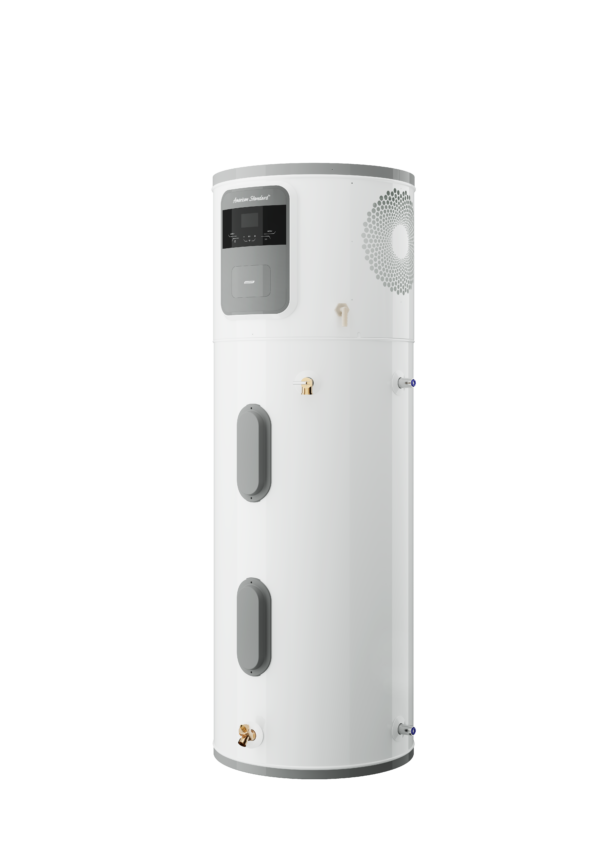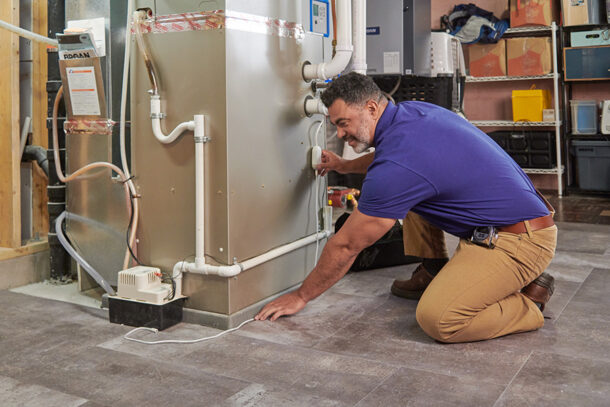Many industries are benefiting from the wonders of technology and the plumbing industry is no different. In fact, there are many ways in which the plumbing industry is being revolutionized as the demand for plumbing services continues to maintain and rise in some areas of the country. Whether it’s keeping up with the demand of Read more
Leak Detection Technology
Many industries are benefiting from the wonders of technology and the plumbing industry is no different. In fact, there are many ways in which the plumbing industry is being revolutionized as the demand for plumbing services continues to maintain and rise in some areas of the country.
Whether it’s keeping up with the demand of older buildings that need fixes and replacements, to tackling new build properties that require ongoing support as climates change and increase risks of pipe problems.
Making use of innovative plumbing systems and operations is helpful in continuing the support and service that plumbers provide to their local community.
With that being said, what can we expect from the future of plumbing? This guide will take a closer look at what ways technology is improving the industry and revolutionizing it in 2025.

Smart plumbing systems
The use of technology has increased rapidly in recent years, with many industries embracing its innovative features to make operations easier to manage. For the plumbing industry, smart plumbing systems are being used with the help of advanced technology.
Not only do they improve the traditional plumbing infrastructure in place, but they also provide new methods of plumbing to make the job easier.
As a plumber, smart plumbing should be embraced as much as possible. Being able to adapt to the changing landscape of business is important to have the skillset for. That way, you can continue offering your services as a plumber to new homes and businesses in the future.
With that in mind, let’s look at how these smart plumbing systems are helping many within the industry.
Management of water
It’s a concern for many, especially in countries where water is in short supply. Not only that but the wastage of water is having a significant impact on the world and the eco-efficiency of households and businesses.
Intelligent plumbing systems are therefore essential to help manage water usage properly and effectively.
Homeowners are able to monitor their water consumption with the use of sensors and smart meters. Businesses are able to access real-time data to understand where their water consumption is at its highest so that they can put in useful steps to reduce wastage where possible.
Having the knowledge that intelligent plumbing systems provide, helps people to make good decisions and save water effectively.
A focus on energy efficiency
With innovative plumbing systems, you’ll find that energy efficiency levels improve as a result. By optimizing the operations of water heats and pumps, for example, these systems can be used alongside smart thermostats.
For plumbers, there’s been a significant rise in the need for smart technology around the home and smart thermostats are a go-to for helping manage the heating of the home in a more optimized manner.
It helps to eliminate unnecessary energy consumption and to also ensure all piping within the plumbing system, remains at a temperature that will avoid the risk of damage. Frozen and burst pipes are part and parcel of not always turning on the heating and warming the pipes.
With smart technology like thermostats available, this improves the safety of property owners as a result.

Detecting leaks
Leaks pose the biggest risk when it comes to flooding within the home, especially with pipes that are tucked away and might not show a presence of leaking until it’s caused extensive damage.
Leaks within a plumbing system can result in a lot of hassle, stress and money. While plumbers will fix the problem no matter what and possibly benefit from the result of severely damaged pipes, it’s important to help customers mitigate the risks as much as possible.
As such, there are more innovative plumbing systems being deployed that provide plumbers with leak detection technologies that can be used when there’s a suspected leak. At the same time, some homeowners and business owners might want to look at getting their property checked over on occasion to prevent leaks from occurring.
From water flow sensors to artificial intelligence that detects abnormalities in the plumbing system, this type of technology is saving people a lot of money.
Remote monitoring and control technology
With intelligent plumbing systems, the plumbing equipment in question can be monitored and controlled from places beyond the property itself.
This type of technology is helpful for homeowners and property owners to have but it can be also useful for the plumbers responsible for the fixes and repairs.
With the use of real-time data, it can help to manage the various issues that can arise within a plumbing system. Whether that’s while fixes and updates are being made, or conducted through annual reviews of the plumbing system. It can be helpful for homeowners to react quickly in an emergency too, so being able to switch off water valves for example.
This type of remote monitoring and control technology provides both plumbers and their customers with the power to minimize damage, even from afar.
Home automation
Intelligent plumbing relies on automation for a lot of its current features. Thankfully, there are a lot of home automation systems that homeowners and business owners can take advantage of in order to help maintain their properties without as much effort as what would be required of them traditionally.
With more home automation systems in place, connecting your plumbing system to it is easier to do than ever before.
Through the help of plumbers, smart technology can be interconnected for a more cohesive ecosystem. Voice command technology has the ability to control water temperatures and who knows what could be achieved in the future thanks to this integration of technology.
Health and maintenance of plumbing systems
With smart plumbing, you get a lot of convenience and efficiency. Not only that but it can provide a lot of protection for plumbing systems which plumbers can be helpful in assisting with.
From monitoring the health of pipes and valves with smart technology, plumbers can quickly identify any potential vulnerabilities and dangers. That means they’ll be able to put in preventative measures and mitigate the risks that come with plumbing systems when they’re not monitored so closely and on a regular basis.
By helping to detect problems before they occur, it can reduce the risk of expensive repairs as a result.

Improved maintenance and analytics
Plumbing systems require maintenance in general and this has been helped in recent years thanks to analytical and management software.
Plumbers that have access to plumbing software are able to manage their jobs more efficiently. They can see historical notes and access key data to help them make more informed and accurate decisions as a result.
With data-driven insights, as well as the use of predictive analytics, plumbing technologies can improve upon the efforts of how maintenance is done.
That, along with analyzing patterns and setting various parameters, can help to identify and fix issues before they even occur. All of which leads to a more seamless and efficient plumbing system for all households and businesses.
Water quality monitoring
Technology is improving many aspects of the plumbing world, including the water that runs through the pipes.
As a plumber, it’s important to offer homeowners and business owners effective plumbing systems and clean water.
With the technology available nowadays, water quality can be monitored and treatment can be provided more easily. With sensors being able to monitor pH levels, chemical composition and more, water quality can be improved and proactive measures can be taken to ensure a healthier water supply for all.
At the same time, when emergencies occur, this knowledge can help to shut down the water supply or apply treatment sooner than later.
Smart irrigation
With plumbing technology, it’s not just something that’s limited to indoor plumbing systems. There are also great steps being made in the outdoor field of irrigation.
Smart irrigation is having its moment, where plumbers can utilize sensors, advanced algorithms and weather data in order to make use of water usage for clients.
These systems in place are highly effective for the help of adapting irrigation schedules, reducing water runoff and in general, being more efficient environmentally.
Sustainability improvements
Finally, it’s the buzzword on everyone’s lips – sustainability. Improving plumbing systems through the method of sustainability is the ultimate goal when helping the environment. More homeowners and business owners are willing to embrace sustainable practices to help the environment, which is where plumbing systems come into play.
Innovative plumbing systems help play a key role in regulatory compliance and ensuring all eco-friendly practices are pursued. Such systems help to better monitor water usage, improve its efficiency and ensure all plumbing systems are up to modern requirements.
The plumbing industry will always be needed so long as plumbing systems exist across the globe. That means for plumbers, while the work will never be in short supply, it’s important to find ways to make plumbing more efficient with technology.
Use these tips to ensure all your customers receive the very best in plumbing services and to look at opportunities that technology presents to improve your plumbing efforts this year and beyond.

Hardwood floors hold a regal and timeless charm, offering a delicate balance of elegance and practicality to the interior of your living spaces. However, you must put considerable effort into maintaining your hardwood floors’ natural warmth and personality. Exposure to moisture can instigate unwelcome changes to the structural integrity of your flooring and mold growth Read more
Hardwood floors hold a regal and timeless charm, offering a delicate balance of elegance and practicality to the interior of your living spaces. However, you must put considerable effort into maintaining your hardwood floors’ natural warmth and personality.
Exposure to moisture can instigate unwelcome changes to the structural integrity of your flooring and mold growth in the quiet corners of your home. Mold infestation threatens not only the integrity and splendor of these cherished floors but also your family’s health in terms of respiratory issues and allergies. Continue reading this article to learn about the latest advancements in plumbing systems to protect your hardwood floors against water damage.
How Does Water Damage Hardwood Floors
Here is how water affects your beautiful wooden floors
1. Mold
The most significant limitation of hardwood is its susceptibility to mold formation. Faulty pipes can lead to small leaks that can progress into water bursts if not timely repaired. This can cause leaks to accumulate under your hardwood to form mold in floor, accompanied by staining of the wood surface and a putrid smell. Mold can pose serious health hazards to people living in the house, relating to respiratory issues and skin and eye allergies.
2. Swelling and Cupping of Planks
Prolonged water damage can cause water to seep into the sub-flooring. The wooden planks start to absorb the water and present as swollen planks that rise at the edges and an uneven surface. Alternatively, the planks can warp and bow downwards, dripping water down the subflooring.
3. Soft Boards
Soft wooden flooring is the most evident and tell-tale sign of prolonged and extensive water damage. They can cause severe damage to the structural integrity of your floor and lead to slipping hazards. Soft boards signify the planks of your hardwood are rotten and need immediate replacement. They also indicate that the damage has spread to other areas of your house.
Plumbing Upgrades to Prevent Leakage and Mold
If you are a homeowner planning a renovation, it is essential to consider the latest, enhanced plumbing systems to ensure your hardwood floors are maintained in impeccable condition.
1. Leak Detection Technology
Modern leak-detecting sensors give early warnings against potential leaks. They work by monitoring the water flow through the pipelines and identifying disruptions in flow. The sensor automatically cuts off the water supply to the household through a main valve and prevents leakage until the issue has been resolved. Conveniently, these sensors are customizable, so you can adjust the settings according to your daily water usage, and the system will automatically detect excessive water flow that accompanies leakage.
2. Plumbing Insulation
Effective plumbing insulation around all the pipes in your household is a worthwhile investment. Plumbing insulations are installed to limit condensation on pipe surfaces, which can lead to corrosion and, ultimately, leaks and pipe bursts. Additionally, they provide a noise-cancellation effect and regulate temperatures, effectively reducing your bills in the cold seasons. Insulation can be achieved through various means available in the market, including:
- Cheap polyethylene foams with pre-cut slits that can conveniently slide over your pipes
- Versatile rubber insulation that is easy to install and can be used both indoors and outdoors
- Fiberglass insulation which is effective in preventing pipe bursts during the cold winters
- Mineral wool, with its noise-cancellation and fire-resistant properties
3. Anti-Flooding Mechanisms
Backflow occurs when the dirty municipal water mixes with clean water in your plumbing system. It mostly occurs when you don’t adequately safeguard your plumbing system with backflow prevention devices, so the municipal water is siphoned into your plumbing system when there is a drop in the city’s water pressure.
You can prevent backflow by using sump pump devices and vacuum breakers that break the suction vacuum formed by a backflow situation. Installation of these devices will ward off the risk of your house flooding with sewage water and maintain the integrity of your plumbing system and hardwood floors.
Endnote
Maintenance of your cherished hardwood floorings and an effective plumbing system go hand in hand. It is crucial to equip yourself with advanced plumbing devices to guard your wooden floors against mold infestations and preserve their classy look while prioritizing your family’s health and house’s hygiene.
